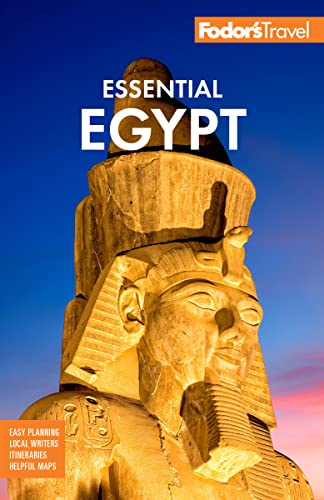Itineraries: The Desert in Depth
10 Days (or 2 Months)
For the ancient Egyptians, the Western Desert was a land of mystery and dread. It was the land of the dead, which is why they built all their pyramids west of the Nile. But for many visitors, Egypt is inseparable from the desert, and a trip to these remote oases is an awe-inspiring experience. Although no longer as isolated as they once were, thanks to modern roads connecting them to Cairo and Luxor, they make a stunning contrast to the hustle and bustle of life on the Nile.
Siwa
4 Days. Close to the Libyan border, Siwa has always been only tangentially linked to Egypt: its people belong to the easternmost branch of the Amazigh (Berber) peoples who can be found across North Africa, and speak their own language, Siwi. A visit involves a 9-hour bus ride from Alexandria, or a slightly longer car ride from Cairo. On Day 2, your first full day in Siwa, stroll around Siwa town, and check out the tombs on nearby Gebel al-Mawta. That afternoon, drive out (or better yet, hire a local horse-and-cart) to Aghurmi, the ruins of the ancient Oracle of Amun, where the priests declared Alexander the Great’s divinity. On Day 3, take a swim in Cleopatra’s Bath and hire a guide to see the desert outside town, such as Bir Wahed spring, some Roman-era tombs, and Siwa’s massive salt lake. Return to Cairo (or take the desert road to Bahariyya Oasis) on Day 4.
Bahariyya Oasis
1 or 2 Days. Most people start their tour of the Western Desert oases in Bahariyya, about a five-hour drive from Cairo. Although its main city, Bawiti, is not particularly beautiful, it is home to a local museum showing some of the mummies from the “Valley of the Golden Mummies” uncovered nearby. There are a few other 26th-Dynasty tombs in town, and the pleasant El Beshmo spring nearby. On Day 2, you'll head to the area's real attraction, though, the Black Desert on the way to Farafra Oasis. Stark black-stoned hills cluster one after the other beside the main highway: a guide with an off-road vehicle is the best way to see them up close; you'll either spend the night in the desert or return to Bahariyya.
Farafra Oasis
1 or 2 Days. Trips to the Black Desert often include a visit to the even more impressive White Desert as well, usually including an overnight stay among the moonscape rock formations—the nighttime stars and the breath-taking experience of sunrise in the desert alone make it worth the trip. If you are not returning the next morning to Bahariyya, you can arrange to continue ahead to Farafra Oasis, the smallest and most remote of the four oases, where you can take a look around and spend the day (and perhaps the night) before moving on. Check out the Badr Museum, in fact a gallery owned by a local sculptor, and enjoy the greenery in town, before continuing on to Dakhla.
Dakhla Oasis
1 Day. About 260 km (160 mi) southeast of Qasr al-Farafra is the medieval town-complex of Qasr al-Dakhla, worth visiting for its Ayyubid-era mosque and carved-wood doors. Nearby is the well-preserved Roman temple Deir al-Haggar. For hotel and restaurant options, continue on another 32 km (20 mi) to Mut, the largest town in this sprawling oasis.
Kharga Oasis
2 Days. Although Qasr al-Kharga is the most modernized (and least interesting) of the oasis cities you’ll likely be staying in, it does have some excellent ruins outside of town that may make it worth a two-night stay. Start with a visit to the New Valley Museum outside of town, and continue with a visit to al-Bagawat, possibly the oldest Christian cemetery in existence, with some painted tombs. Also within easy driving distance is the majestic Persian-built Temple of Hibis. Farther afield are the evocative ruined Roman forts Qasr al-Labeka and Ain Om al-Dabadib, as well as the fortress Deir al-Muneira. South of Kharga, in the almost separate oasis of Baris, is Qasr al-Dush, a remote Roman way-station guarding the 40 Days Road trade route.
Gilf Kebir
12–28 Days. For true desert explorers, a safari across the Great Sand Sea to the remote Gilf Kebir plateau is the trip of a lifetime. The existence of this remote oasis was only confirmed in the early 20th century, and later hardy visitors like Ralph Bagnold and Laszlo Almasy (of The English Patient fame) frequented it. Because of the heat, travel companies generally only run trips between September and March. Because of security clearances and the limited travel window, you will need to make arrangements for this trip three to six months before you arrive in Egypt.




